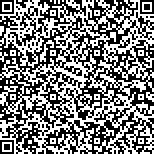| 引用本文: | 耿雪,肖英,周倩,祝清芬.不同品种滴眼液细菌内毒素检查方法建立与风险分析[J].中国现代应用药学,2023,40(11):1526-1530. |
| GENG Xue,XIAO Ying,ZHOU Qian,ZHU Qingfen.Method Establishment and Risk Analysis of Bacterial Endotoxin Content for Different Eye drops[J].Chin J Mod Appl Pharm(中国现代应用药学),2023,40(11):1526-1530. |
|
| 本文已被:浏览 714次 下载 446次 |

码上扫一扫! |
|
|
| 不同品种滴眼液细菌内毒素检查方法建立与风险分析 |
|
耿雪1,2, 肖英1, 周倩3, 祝清芬1
|
|
1.山东省食品药品检验研究院, 国家药品监督管理局仿制药一致性评价重点实验室, 山东省仿制药一致性评价工程技术研究中心, 济南 250101;2.山东中医药大学, 济南 250355;3.山东省中医药研究院, 济南 250014
|
|
| 摘要: |
| 目的 研究建立各品种滴眼液中内毒素定量检测方法,监测内毒素污染,发现风险品种。方法 收集17家企业生产的26个滴眼液品种,采用中国药典2020年版细菌内毒素检查光度法(动态浊度法)对供试品细菌内毒素含量进行定量检测。滴眼剂pH一般为6.0~8.0,符合细菌内毒素检查供试液pH要求标准,不干扰凝胶反应,无需调节可直接取供试品用BET水稀释。试验时一般选择1︰2稀释倍数进行检测,若存在干扰,则选择供试品从原液2倍比稀释,参照中国药典2020年版四部通则1143进行试验,找到供试品最小不干扰稀释倍数,并在此或更大稀释倍数下对其余批次供试品进行细菌内毒素检查。结果 建立了26种滴眼剂动态浊度法细菌内毒素检测方法,根据临床用途和USP对眼用制剂的内毒素限值规定为依据筛选出2个风险品种;发现2个品种细菌内毒素含量存在不同厂家间的显著差异。结论 对于风险品种和同品种不同厂家产品细菌内毒素含量存在显著差异时,应对该品种或生产厂家予以关注。 |
| 关键词: 滴眼液 细菌内毒素 风险监测 |
| DOI:10.13748/j.cnki.issn1007-7693.20221867 |
| 分类号:R917 |
| 基金项目: |
|
| Method Establishment and Risk Analysis of Bacterial Endotoxin Content for Different Eye drops |
|
GENG Xue1,2, XIAO Ying1, ZHOU Qian3, ZHU Qingfen1
|
|
1.Shandong Institute for Food and Drug Control, NMPA Key Laboratory for Research and Evaluation of Generic Drugs, Shandong Research Center of Engineering and Technology for Consistency Evaluation of Generic Drugs, Jinan 250101, China;2.Shandong Traditional Medicine University, Jinan 250355, China;3.Shandong Academy of Chinese Medicine, Jinan 250014, China
|
| Abstract: |
| OBJECTIVE To establish quantitative detection methods for endotoxins in various types of eye drops, monitor endotoxin contamination, and identify high-risk varieties. METHODS A total of 26 eye drops produced by 17 companies were collected. The bacterial endotoxin content of the test samples was quantitatively detected using the dynamic turbidity method specified in the 2020 edition of the Chinese Pharmacopoeia. The pH of the eye drops ranged from 6.0 to 8.0, meeting the pH requirements for bacterial endotoxin testing of test solutions and not interfering with gel reactions. Therefore, no adjustment was necessary and the test samples could be directly diluted with BET water. Generally, a dilution factor of 1∶2 was used for testing. In the presence of interference, the test samples were diluted at a 2-fold dilution factor from the stock solution, and the experiment followed the guidelines specified in Part 1143 of the 2020 edition of the Chinese Pharmacopoeia. The minimum dilution factor that did not interfere with the test sample was determined, and the remaining batches of test samples were tested for bacterial endotoxin using this dilution factor or a higher one. RESULTS A dynamic turbidity method for bacterial endotoxin detection in 26 eye drops was established. Two high-risk varieties were identified based on clinical use and the endotoxin limit specified in the USP for ophthalmic preparations. Significantly different bacterial endotoxin levels were found among different manufacturers of these two varieties. CONCLUSION When significant differences in bacterial endotoxin levels are observed among high-risk varieties or different manufacturers with the same variety, attention should be paid to the variety or manufacturer in question. |
| Key words: eye drops bacterial endotoxin risk monitoring |
